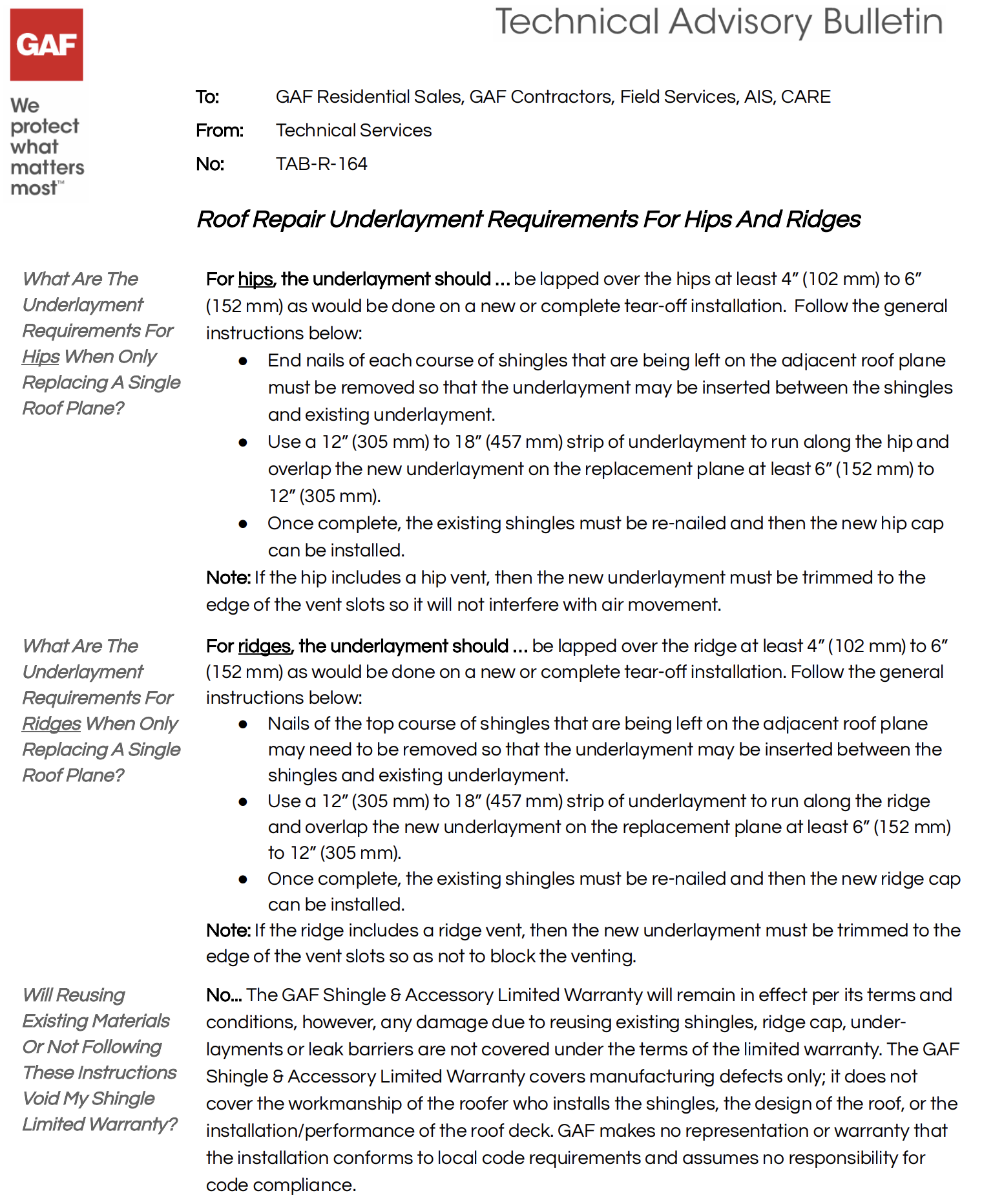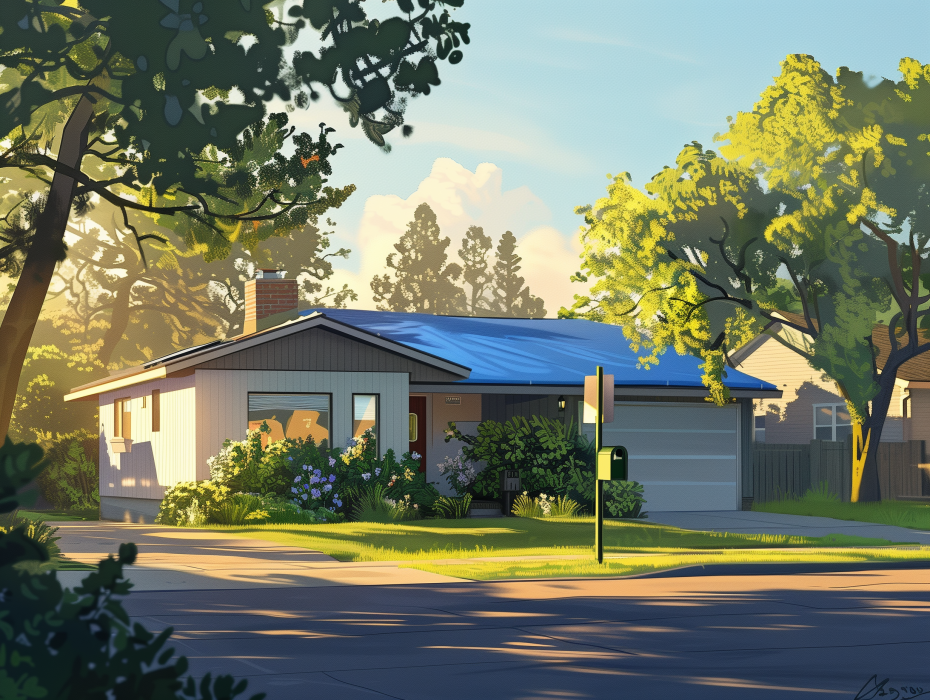Proper Underlayment Installation for Roof Repairs
When replacing a single roof plane, it’s crucial to follow specific underlayment requirements for hips and ridges to ensure the roof’s integrity and performance. Here’s a guide to the proper procedures.
Underlayment Requirements for Hips
For hips, the underlayment should be lapped over the hips at least 4” (102 mm) to 6” (152 mm), similar to a new or complete tear-off installation. Follow these general instructions:
- Remove End Nails: Remove the end nails of each course of shingles that are being left on the adjacent roof plane to insert the underlayment between the shingles and existing underlayment.
- Underlayment Strip: Use a 12” (305 mm) to 18” (457 mm) strip of underlayment to run along the hip and overlap the new underlayment on the replacement plane by at least 6” (152 mm) to 12” (305 mm).
- Re-nail and Install Hip Cap: Once complete, re-nail the existing shingles and install the new hip cap.
Note: If the hip includes a hip vent, trim the new underlayment to the edge of the vent slots to avoid interfering with air movement.
Underlayment Requirements for Ridges
For ridges, the underlayment should also be lapped over the ridge at least 4” (102 mm) to 6” (152 mm). Follow these steps:
- Remove Top Course Nails: Remove the nails of the top course of shingles that are being left on the adjacent roof plane to insert the underlayment between the shingles and existing underlayment.
- Underlayment Strip: Use a 12” (305 mm) to 18” (457 mm) strip of underlayment to run along the ridge and overlap the new underlayment on the replacement plane by at least 6” (152 mm) to 12” (305 mm).
- Re-nail and Install Ridge Cap: Re-nail the existing shingles and install the new ridge cap.
Note: If the ridge includes a ridge vent, trim the new underlayment to the edge of the vent slots to avoid blocking the venting.
Warranty Considerations
Reusing existing materials or not following these instructions does not void the GAF Shingle & Accessory Limited Warranty. However, any damage resulting from reusing existing shingles, ridge caps, underlayments, or leak barriers is not covered under the terms of the limited warranty. The warranty covers manufacturing defects only and does not cover the workmanship of the installer, the design of the roof, or the installation/performance of the roof deck. GAF makes no representation or warranty that the installation conforms to local code requirements and assumes no responsibility for code compliance.
Conclusion
Proper installation of underlayment during roof repairs is essential for maintaining the roof’s integrity and performance. By following these guidelines, homeowners and contractors can ensure a durable and effective roofing system.
For Immediate Service or Consultation
Contact Allied Emergency Services, INC.
Phone: 1-800-792-0212
Email: Info@AlliedEmergencyServices.com
Location: Serving Illinois, Wisconsin, and Indiana with a focus on the greater Chicago area.
If you require immediate assistance or have specific questions, our human support is readily available to help you.
Disclaimer: This article is intended for informational purposes only. For professional advice, consult experts in the field.










